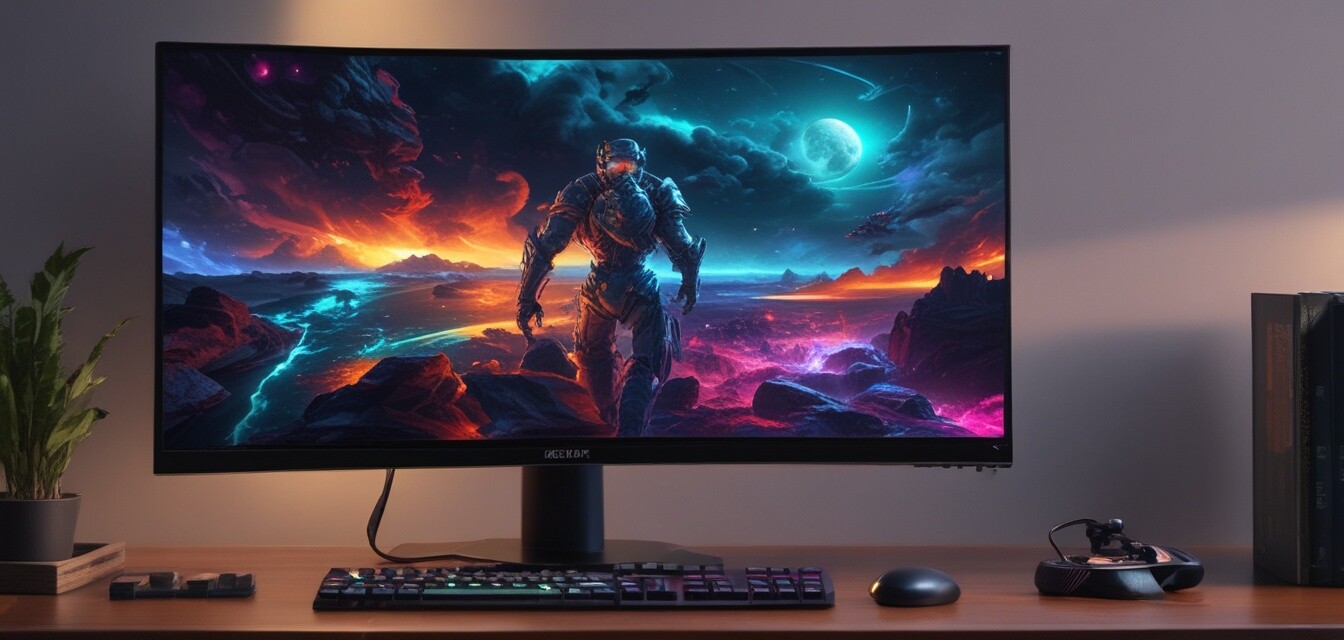
Should You Upgrade to an OLED Monitor in 2025?
Key Takeaways
- OLED monitors offer superior color accuracy and contrast compared to traditional monitors.
- Refresh rates, response times, and adaptive sync technologies contribute to a smoother gaming experience.
- Consider your gaming habits and budget when deciding on an upgrade.
- Advancements in OLED technology make it more accessible than ever.
As the gaming world evolves, so do the technologies that enhance our experience. In 2025, gamers may find themselves pondering whether an upgrade to an OLED monitor is worth the investment. With impressive color accuracy, better contrast, and faster refresh rates, OLED technology has gained popularity among hardcore and casual gamers alike. But is this upgrade necessary for your unique gaming setup? Let’s analyze the factors to consider when making this decision.
What is OLED technology?
OLED stands for Organic Light Emitting Diode. It is a display technology that uses organic compounds that emit light when an electric current is applied. This results in rich colors and deep blacks, making OLED monitors stand out in terms of visual performance. Here are some key features of OLED technology:
| Feature | Description |
|---|---|
| Color Accuracy | Delivers a wider color gamut for stunning visuals. |
| Contrast Ratio | Produces true blacks leading to a higher contrast ratio. |
| Response Time | Faster response times reduce motion blur in fast-paced gaming. |
| Viewing Angles | Maintains color consistency from various angles. |
Reasons to consider an upgrade
Upgrading to an OLED monitor can provide several advantages, especially for gamers looking for a more immersive experience. Here are some compelling reasons to consider:
- Enhanced Visual Experience: OLED monitors provide stunning visuals with vibrant colors and true blacks, improving immersion.
- Smoother Gameplay: With faster refresh rates and response times, you can enjoy a more fluid gaming experience, especially in competitive scenarios.
- Adaptive Sync Technologies: Many OLED monitors support G-Sync and FreeSync, reducing screen tearing and stuttering.
- Future-Proofing: Investing in an OLED monitor can future-proof your gaming setup, making it compatible with upcoming gaming technologies.
Drawbacks of OLED monitors
Despite the numerous benefits, there are some potential drawbacks to consider before upgrading:
- Price: OLED monitors tend to be pricier than traditional LCDs, which might not fit every budget.
- Burn-In Risk: Static images can cause burn-in issues over time if not managed properly.
- Limited Brightness: While contrast is excellent, brightness levels may be lower compared to some high-end LCD monitors.
Assessing personal gaming requirements
Before making the switch, consider your personal gaming habits and needs:
- Type of Games Played: If you play fast-paced competitive games, the benefits of an OLED monitor may be more pronounced.
- Existing Setup: Evaluate how an OLED monitor will fit into your current gaming hardware.
- Budget Consideration: Determine if the performance gains justify the additional cost for your situation.
Comparing OLED with other display technologies
It may be helpful to compare OLED with other display technologies to see how it stacks up. The table below summarizes key differences:
| Feature | OLED | LED-LCD |
|---|---|---|
| Color Accuracy | Exceptional | Good |
| Contrast Ratio | Infinite | Limited |
| Refresh Rate | 120Hz or higher | Typically 60Hz or higher |
| Price | Higher | Lower |
Conclusion
Deciding whether to upgrade to an OLED monitor in 2025 ultimately depends on your personal preferences and gaming needs. For gamers seeking enhanced visuals, smoother performance, and advanced technologies, an OLED monitor can be a worthwhile investment. However, it’s essential to weigh the benefits against your budget and gaming habits beforehand. For more information on choosing the right display, check out our Buying Guides and see how to make an informed decision regarding your gaming setup.
Pros
- Exceptional color accuracy and contrast
- Faster refresh rates for better gameplay
- Enhances immersive gaming experience
Cons
- Higher price compared to traditional monitors
- Potential for burn-in issues
- Limited peak brightness in some models